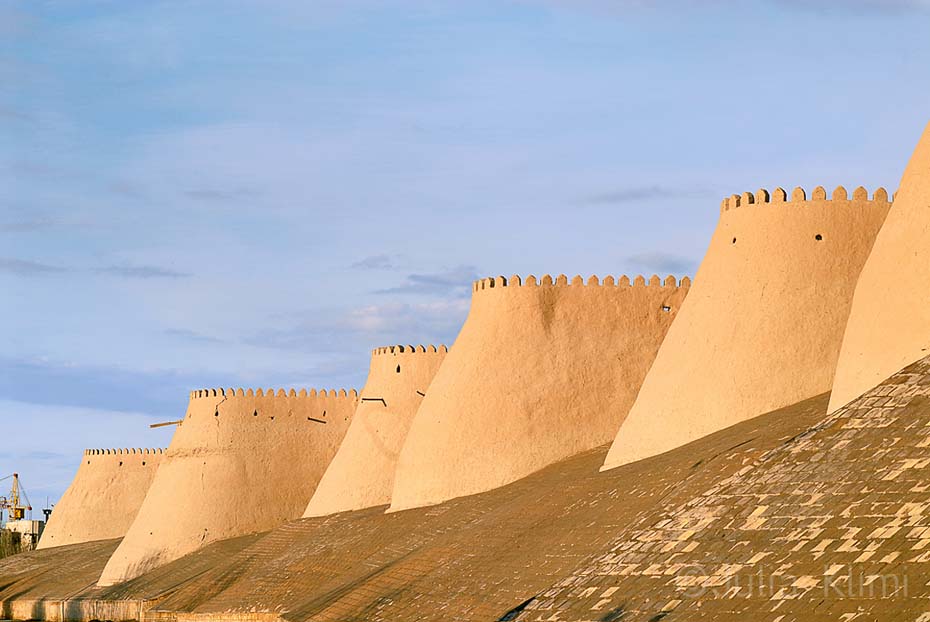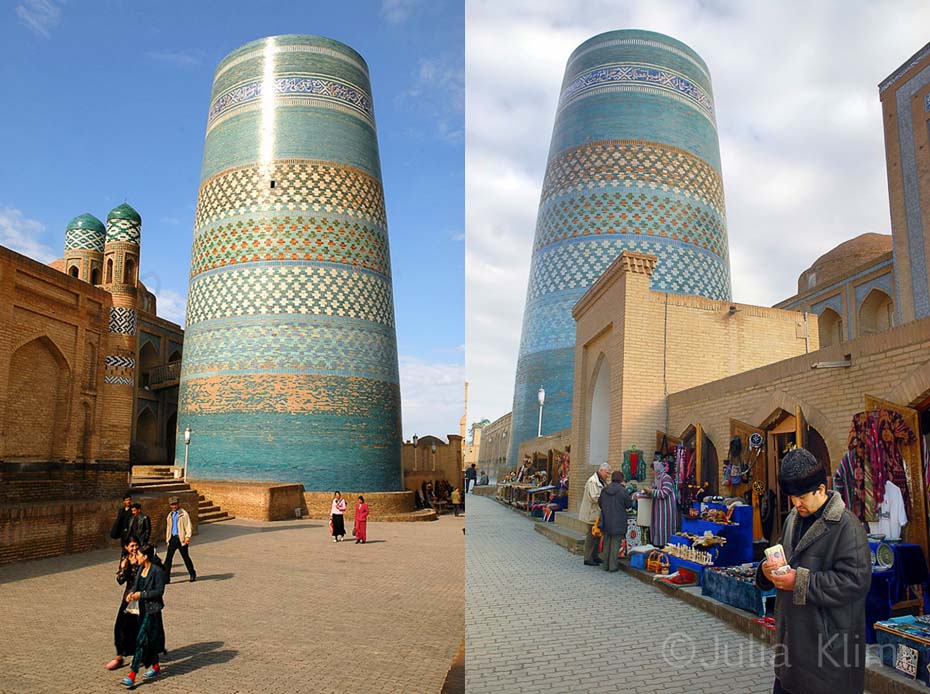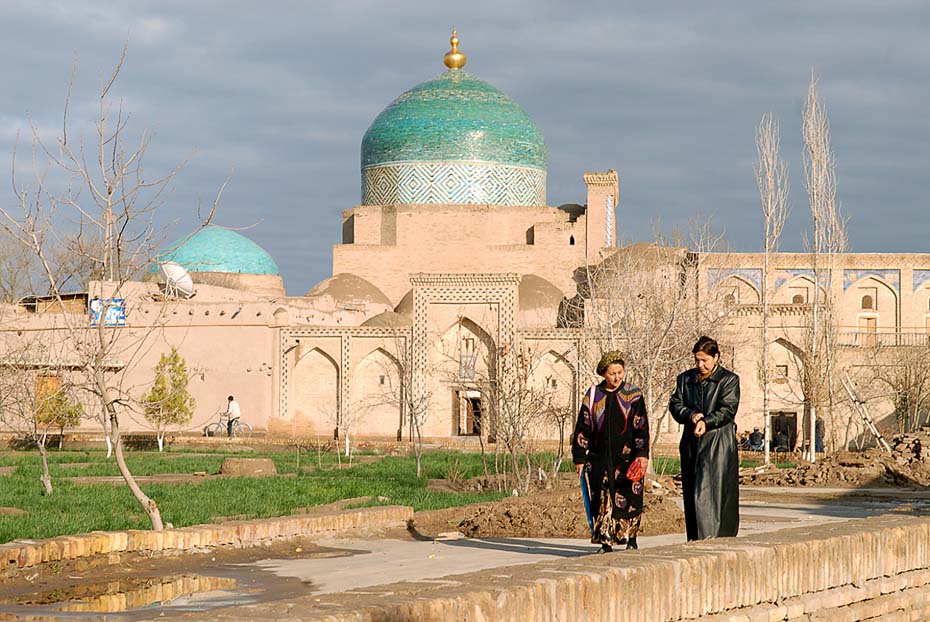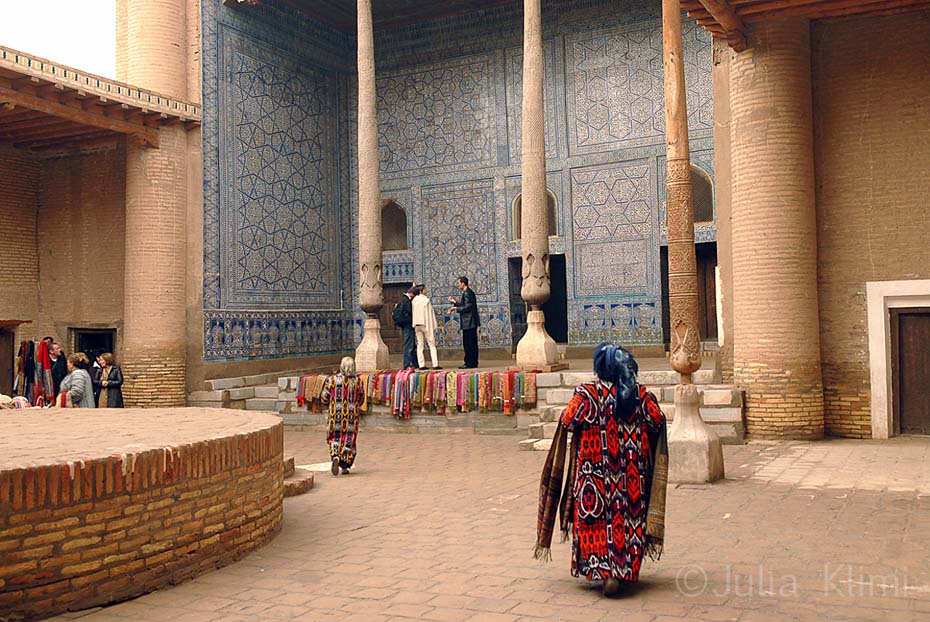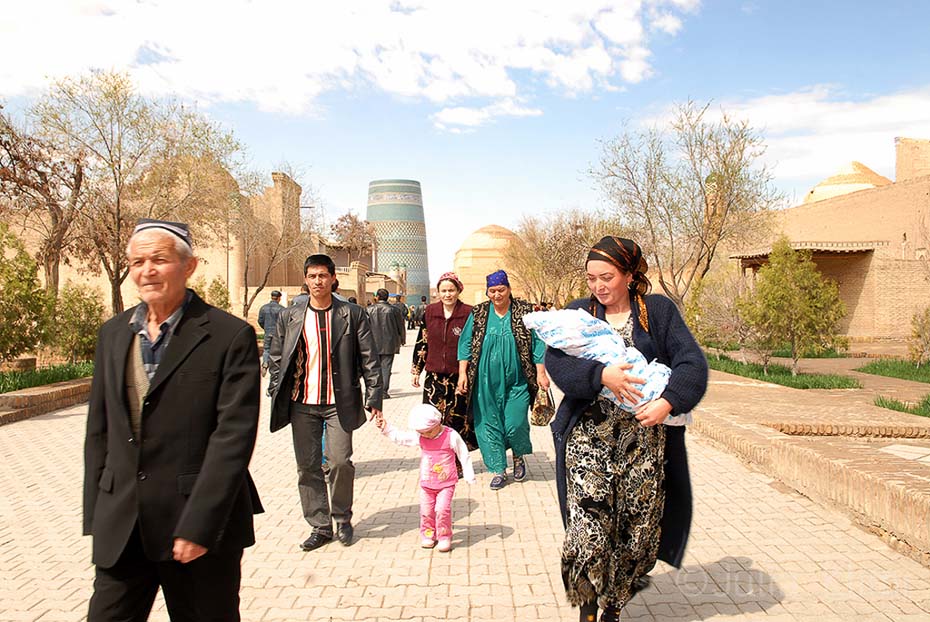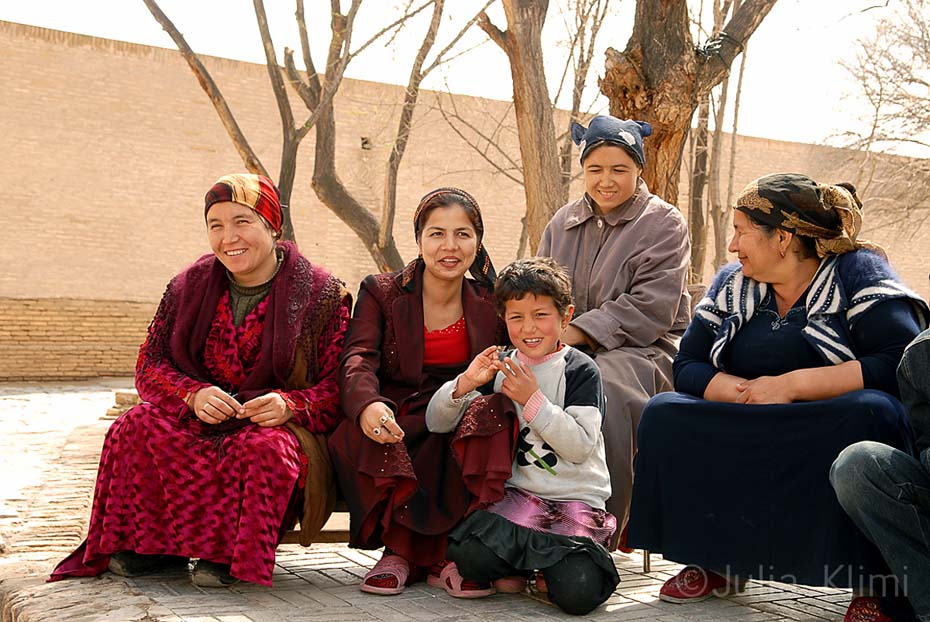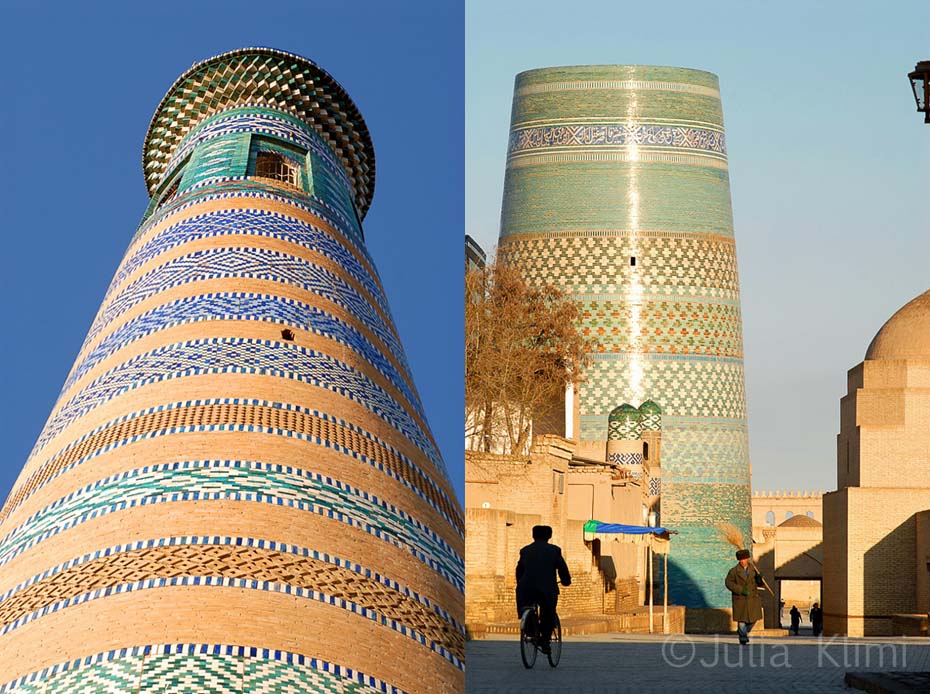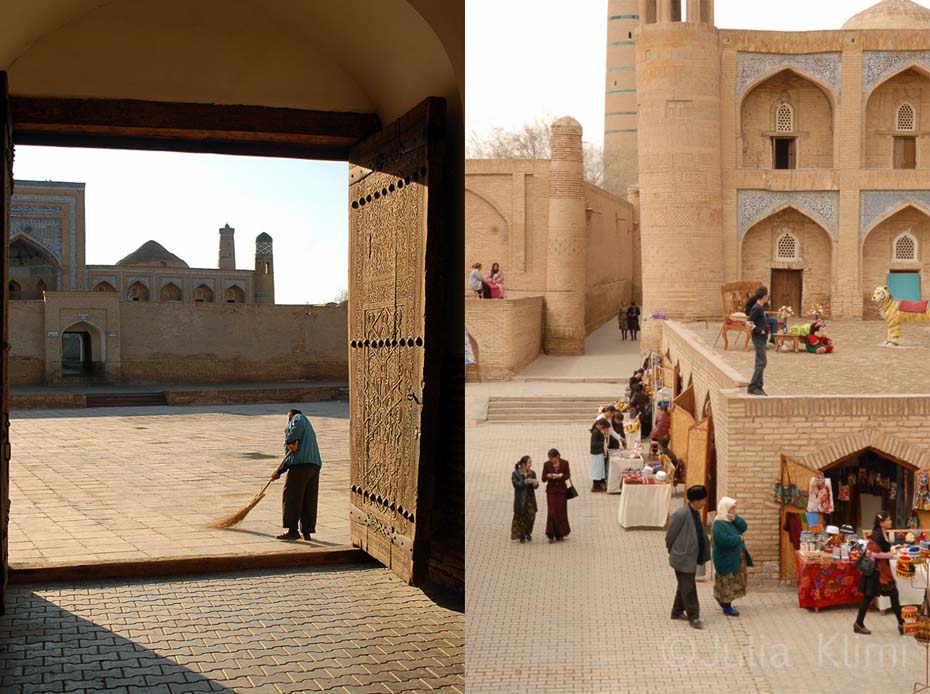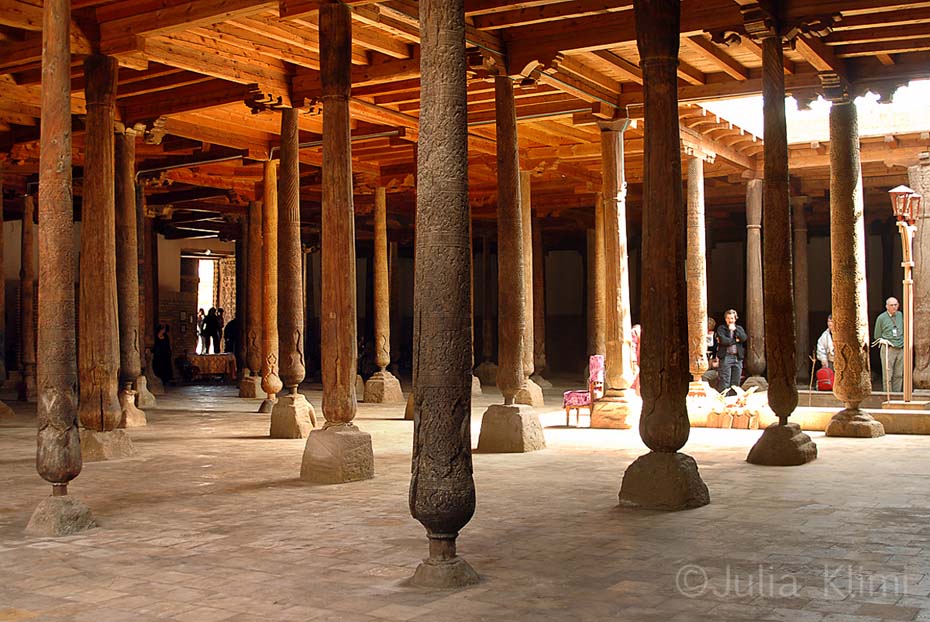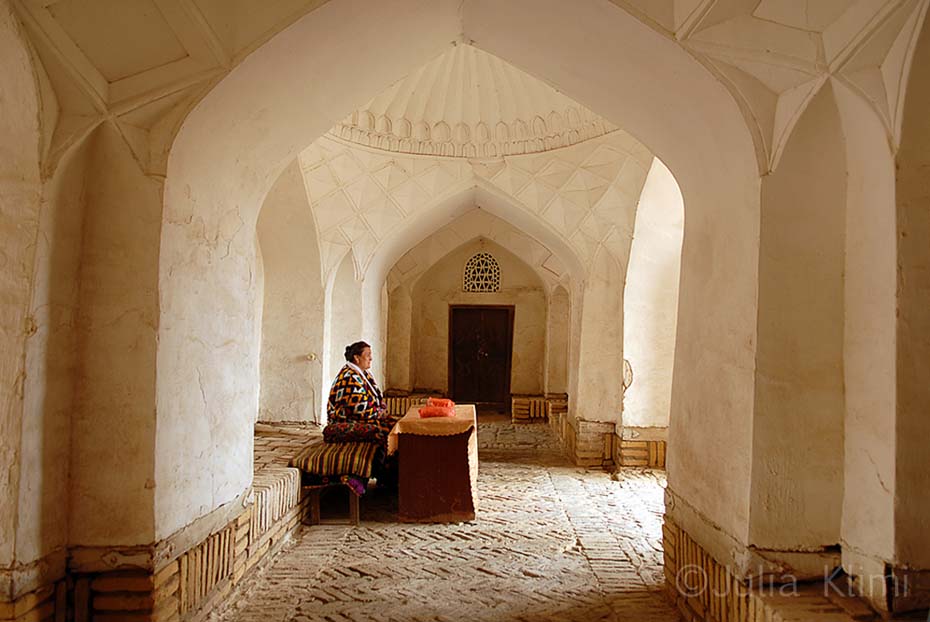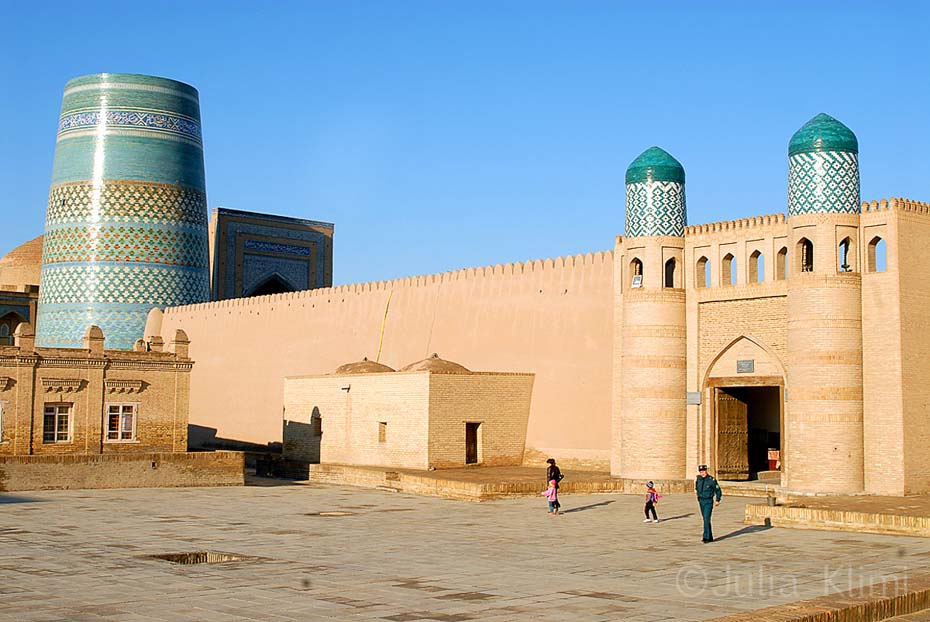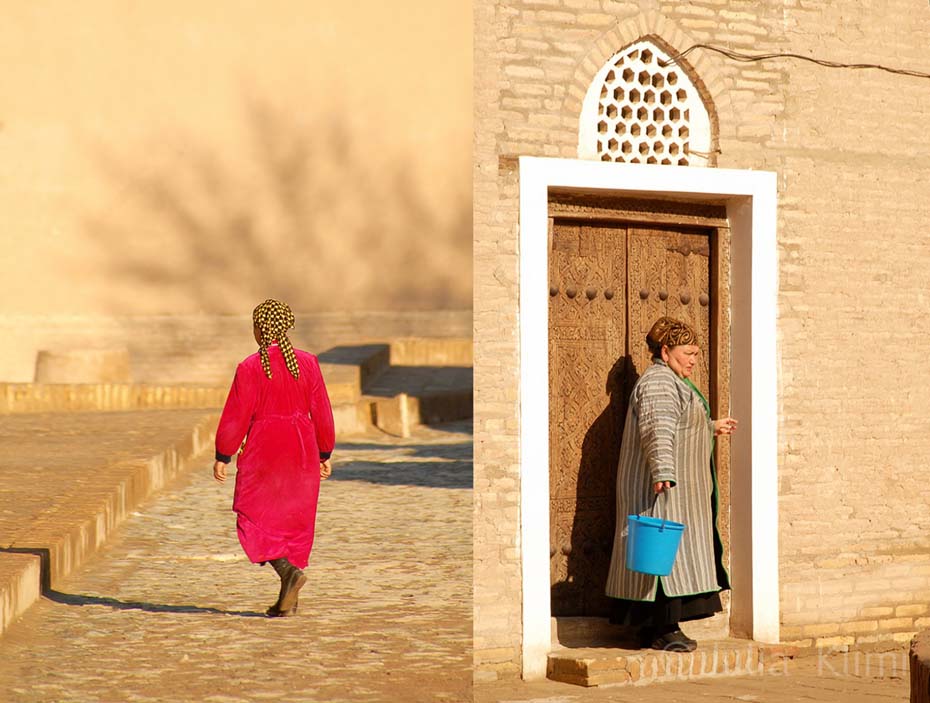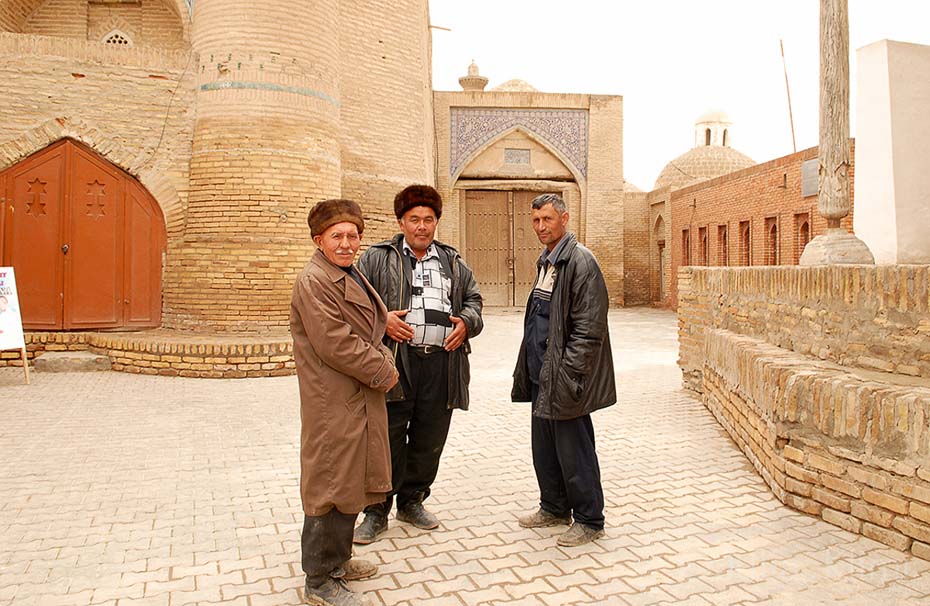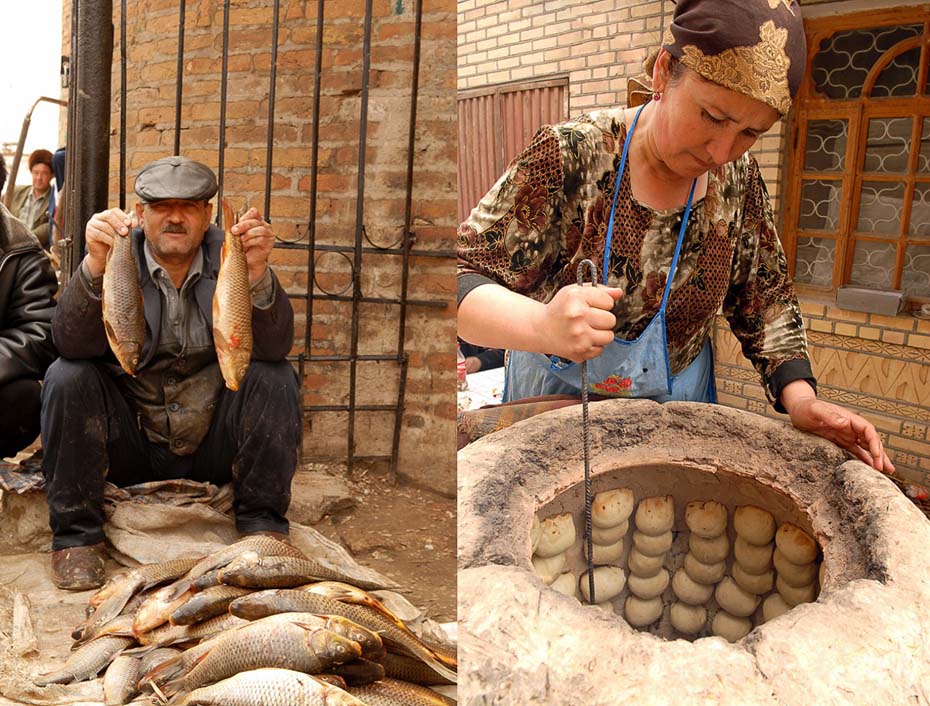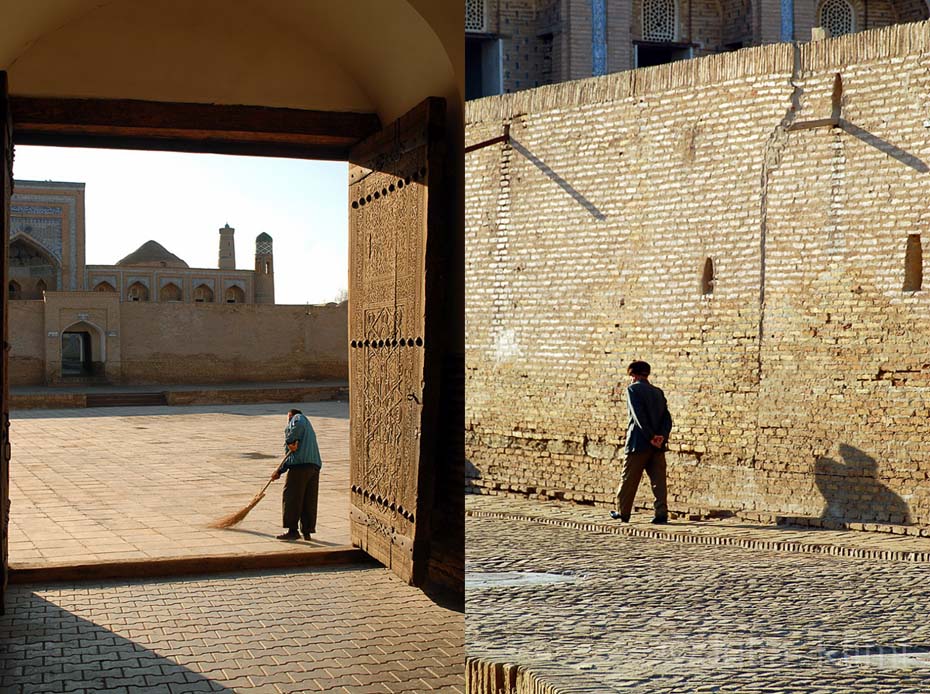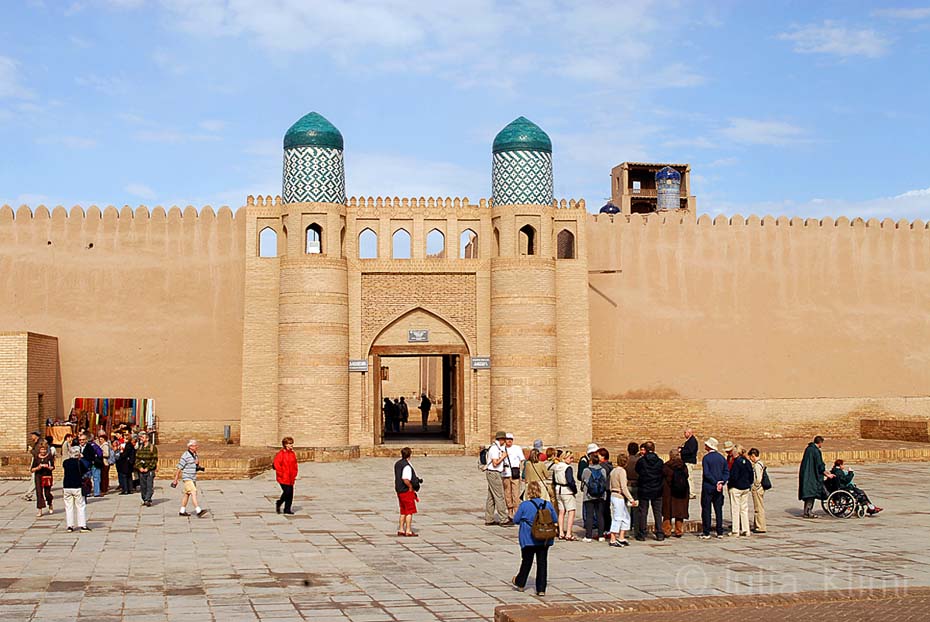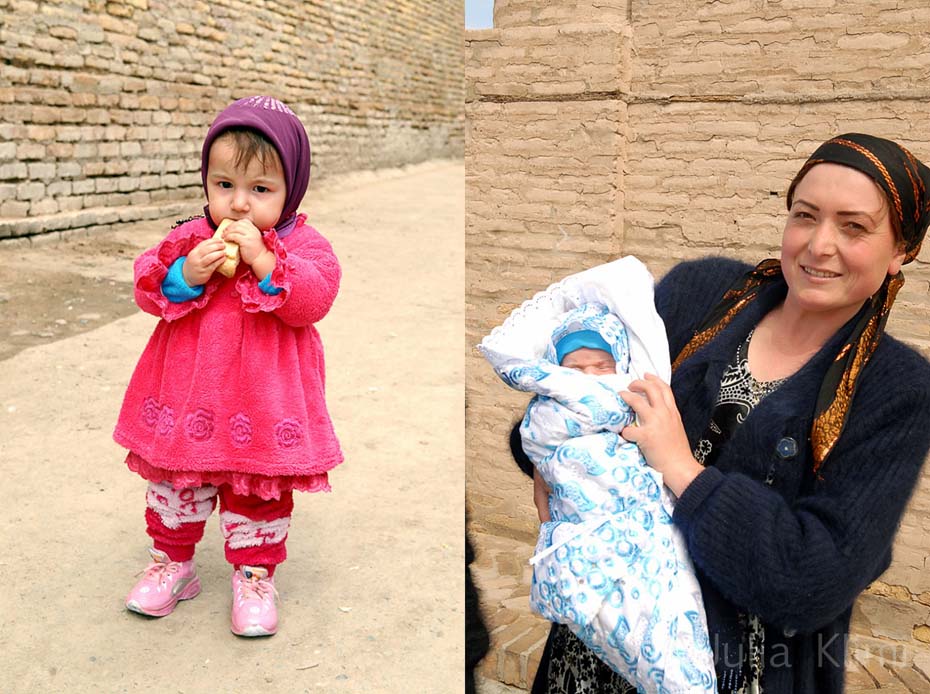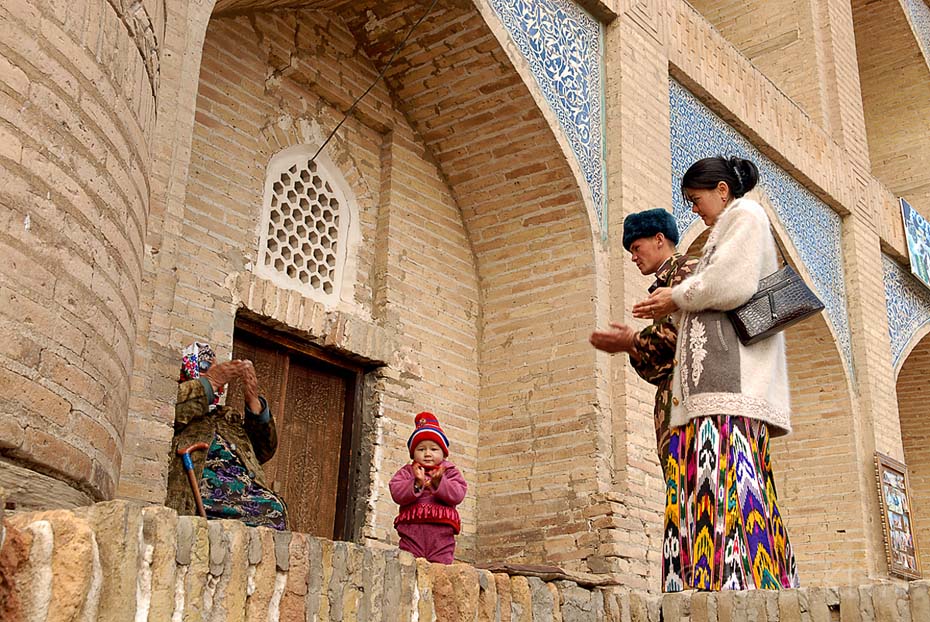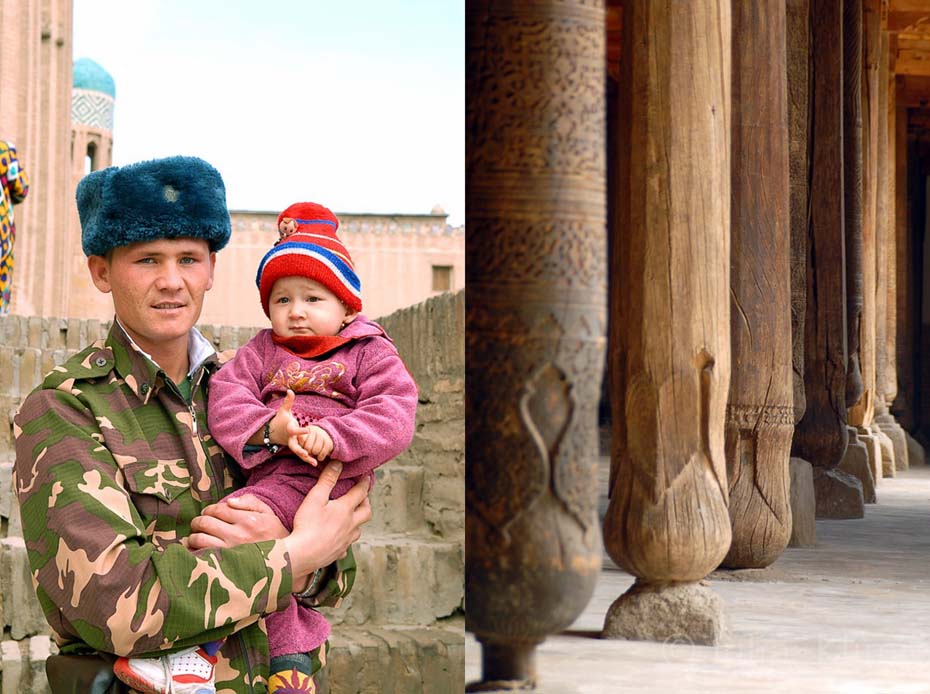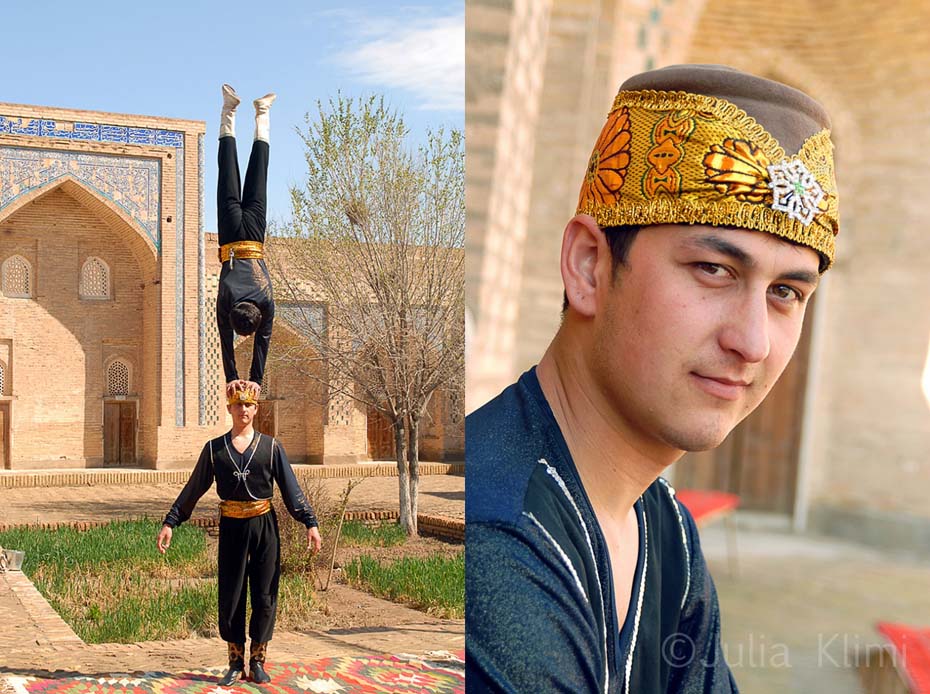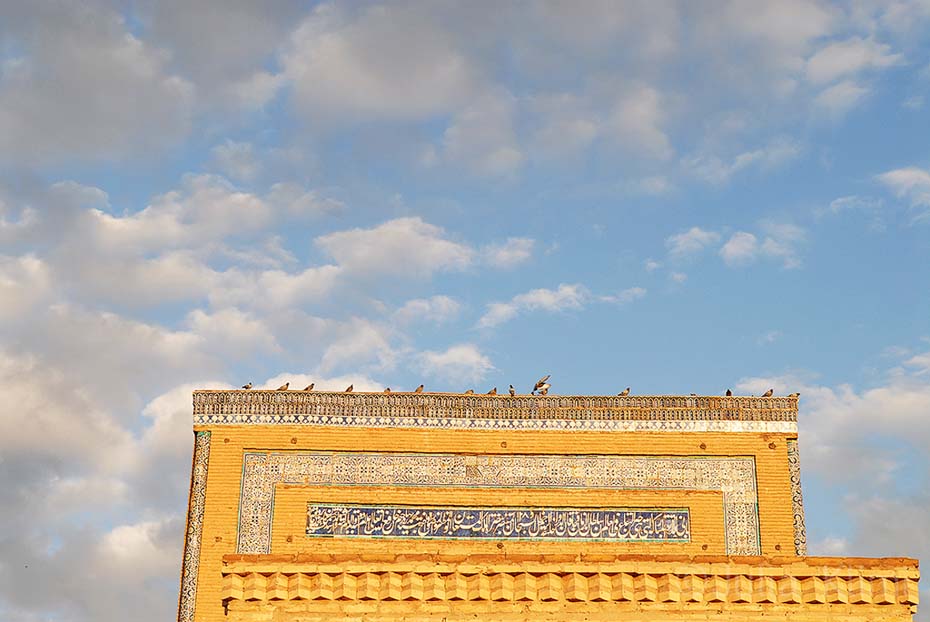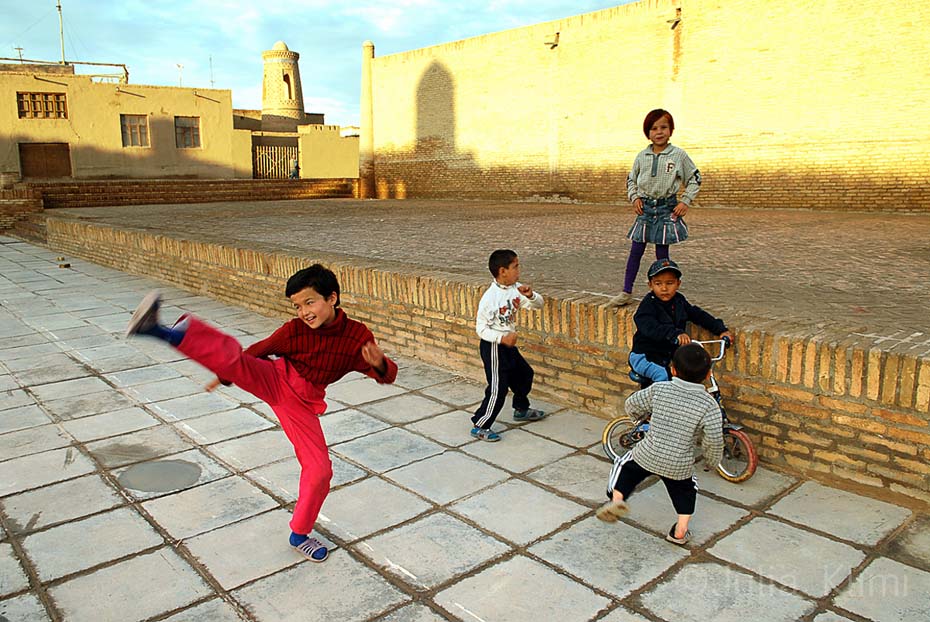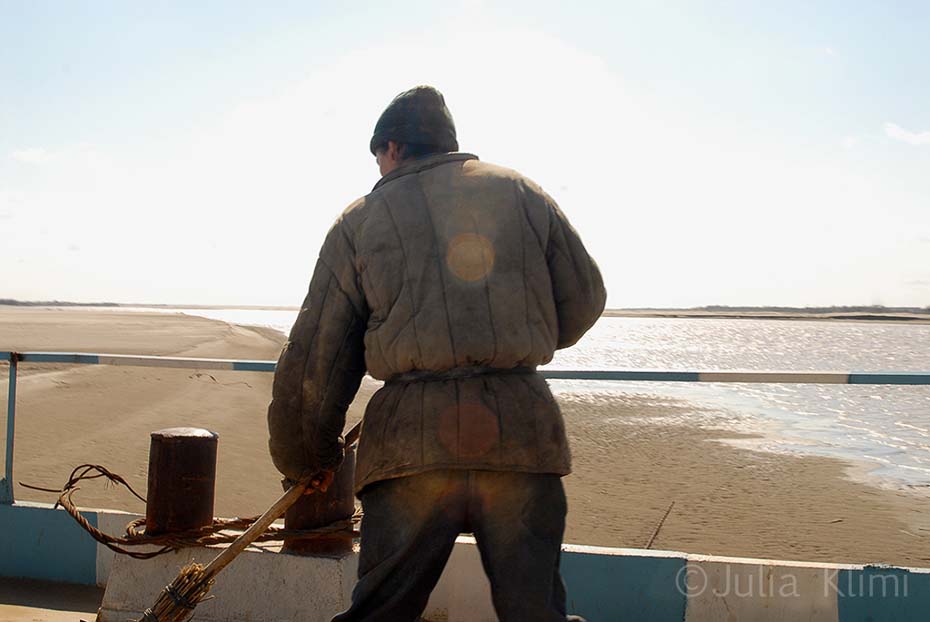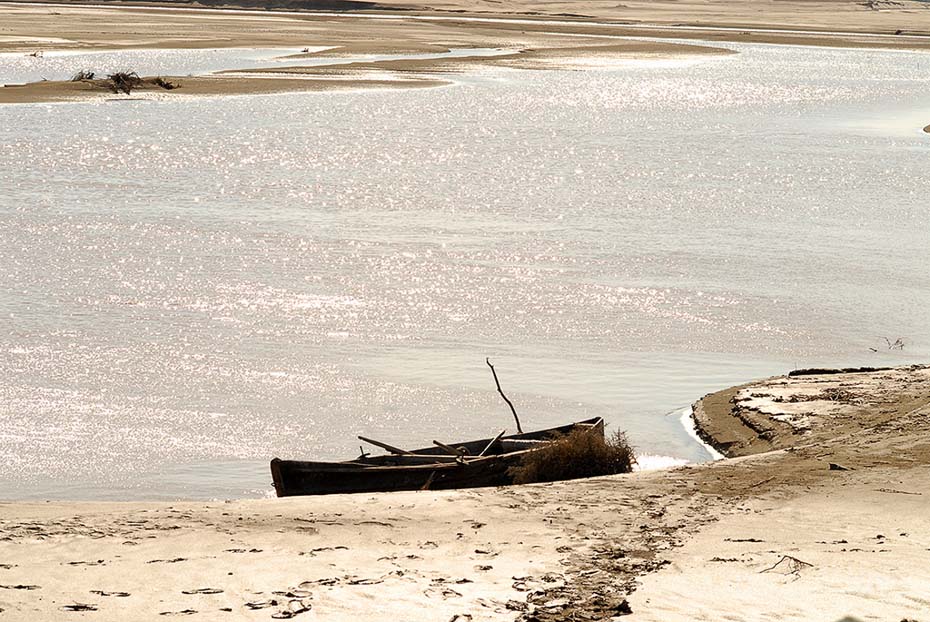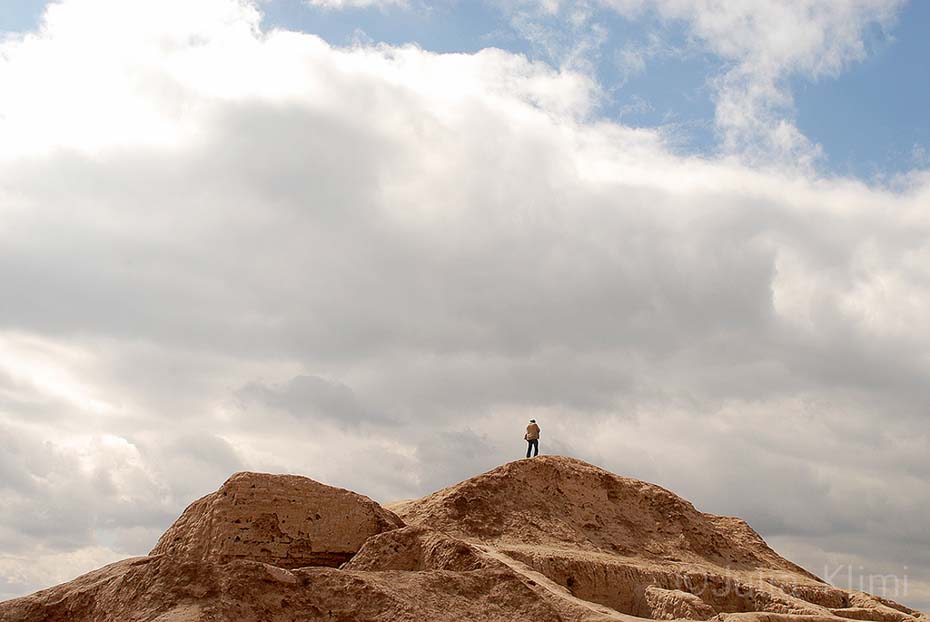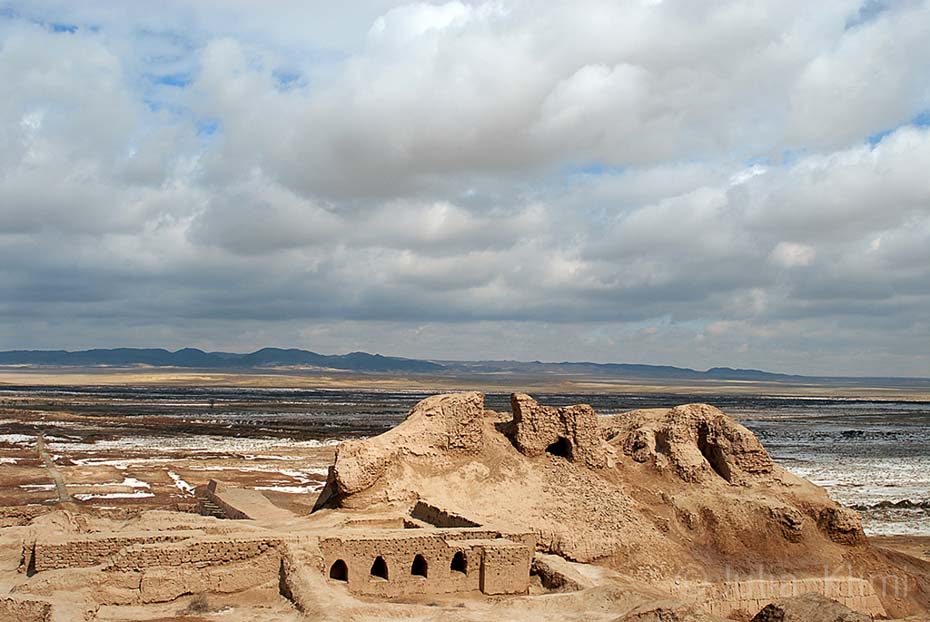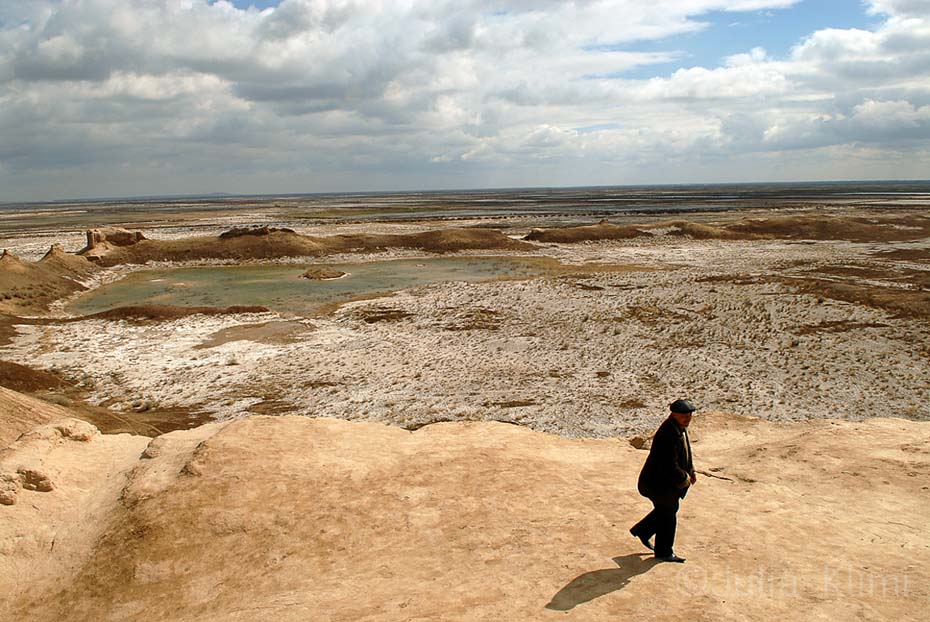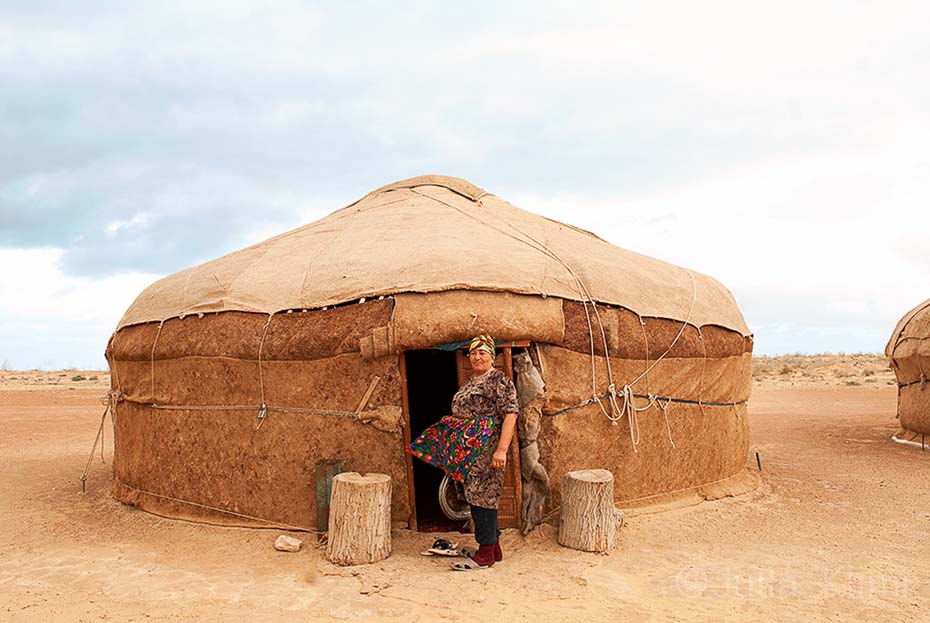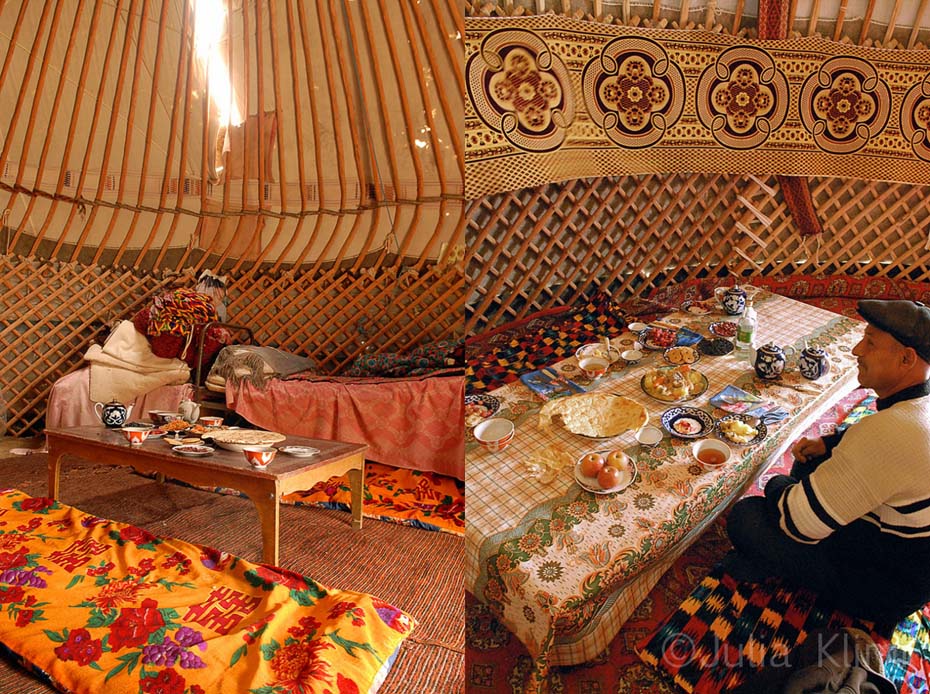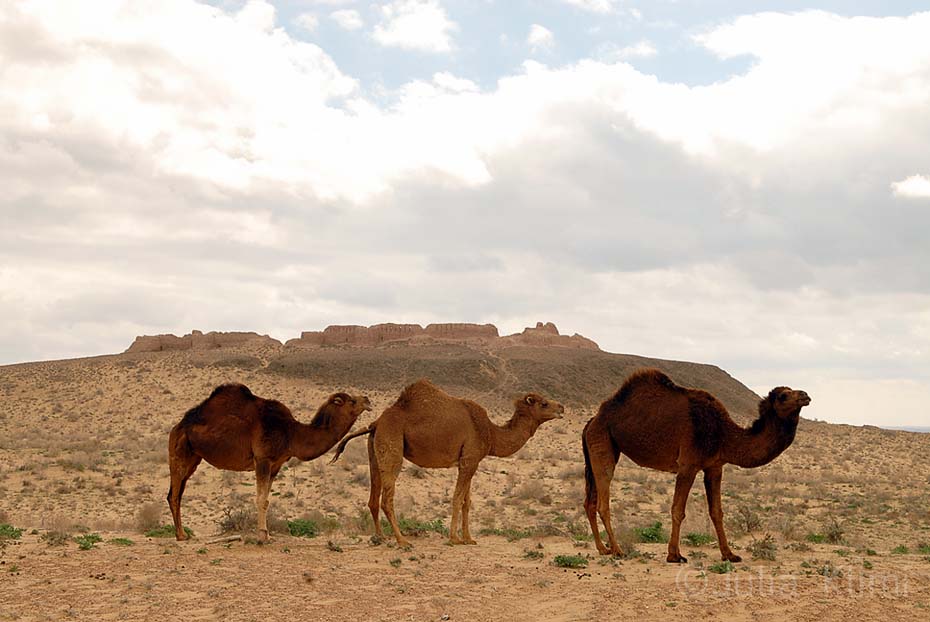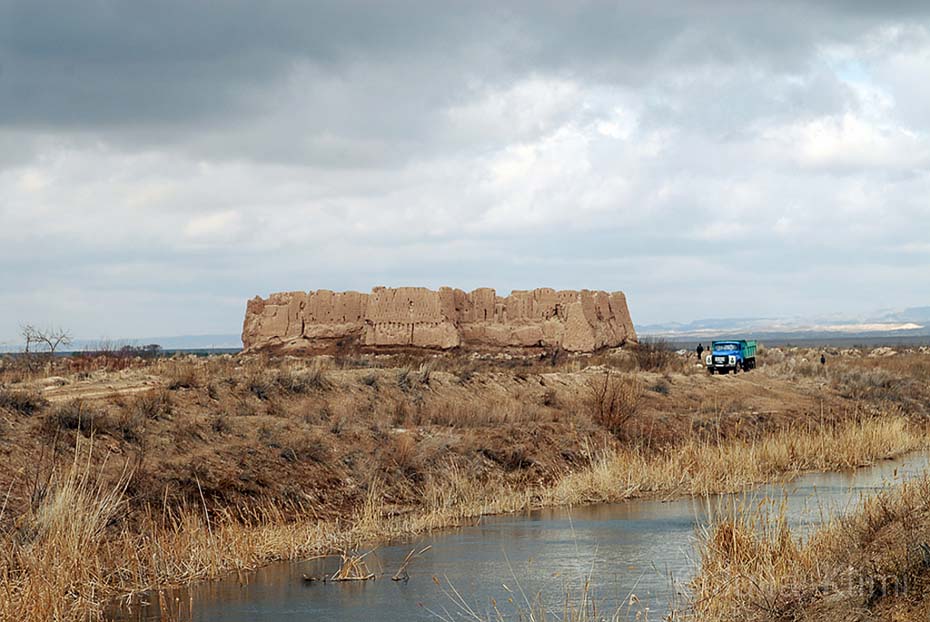Legendary Khiva

Enclosed between the desert of Kyzyl-Kum and the desert of Karakum in Uzbekistan, the legendary city of Khiva emerges grandly from the naked land. This mythical city, in ochre and blinding turquoise, hidden behind high walls 2½ kilometres in length, gracefully conceals its dark past. As we pass through one of the four gates of the city, a voyage unlike any other begins.
Khiva was conquered by Cyrus, followed by Alexander the Great, falling afterwards into the hands of the Kushan, Parthian and Sassanid empires, to be conquered next by the Golden Horde of Genghis Khan. Situated along the Silk Road, it flourished under Tamerlane (Timur) and later, as the capital of an independent khanate, became one of the most important cities of Central Asia until Tsarist Russian rule. After resisting the Bolsheviks in vain, it became part of the Soviet Union. The town was completely restored during the Soviet period, to become the ultimate fantasy of the photographer.
Today one has the feeling that the city has just awakened from a centuries-long lethargy. Couples from Russia on their honeymoon, small groups of European tourists, Uzbeks invited to a marriage of the local upper class and simple ordinary travelers are the few visitors whom one might find wandering around the inner town of Ichan Kala.
Along the main road, tall minarets, imposing madrasas (schools where the Koran is taught), and formidable mosques and mausoleums of unique artistic sophistication amaze the eye. Rambling about from one monument to the other, you stumble across women in colourful traditional costumes who knit socks and shawls, boys selling local hats and Russian cameras hanging in front of the windows. You raise your eyes and admire the polychrome-glazed mosaics of a madrasa, over there a carved wooden door, a few steps further, the “lace-carved” tiles of a dome or the 212 carved pillars rising elegantly in the dim half-light of a mosque.
At the entrance of a madrasa, a couple holding their baby accept the blessings of an elderly woman; in the courtyard of another madrasa, two young jugglers are rehearsing; a craftsman patiently works the wood with a chisel in his shop while another is forging iron; further away the merchants at the bustling bazaar are selling ceramics and all kinds of merchandise; others are baking shashlik, a local kebab dish served with sliced raw onions; and in the big central square, the site of the most important slave market of Central Asia during the khanate period, these days small children play light-heartedly.
There is never enough time to get one’s fill in Khiva, where one finds oneself in a state of wonderment from the unparalleled beauty of the city’s art treasures, the harmony of the buildings and from the mystical aura of the place. Then there’s the sudden urge to meet and communicate with the locals, who speak no language other than Russian, yet offer you a warm cup of tea from the continually-lit samovars in their homes.
Julia Klimi
Translation Vicky Anastasiadou
